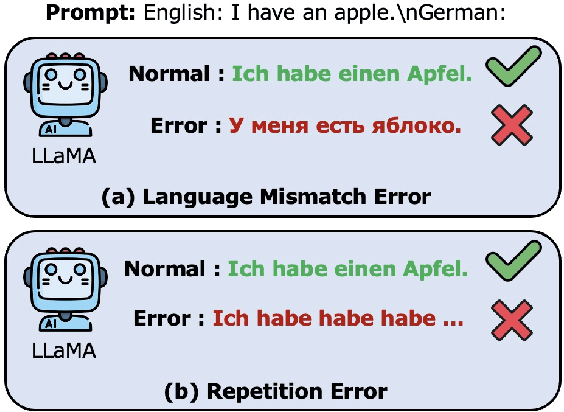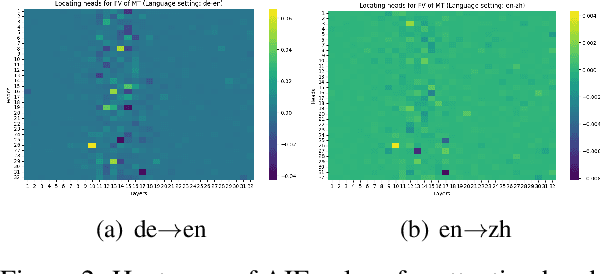Ying Wei
Senior Member, IEEE
CLDyB: Towards Dynamic Benchmarking for Continual Learning with Pre-trained Models
Mar 06, 2025Abstract:The advent of the foundation model era has sparked significant research interest in leveraging pre-trained representations for continual learning (CL), yielding a series of top-performing CL methods on standard evaluation benchmarks. Nonetheless, there are growing concerns regarding potential data contamination during the pre-training stage. Furthermore, standard evaluation benchmarks, which are typically static, fail to capture the complexities of real-world CL scenarios, resulting in saturated performance. To address these issues, we describe CL on dynamic benchmarks (CLDyB), a general computational framework based on Markov decision processes for evaluating CL methods reliably. CLDyB dynamically identifies inherently difficult and algorithm-dependent tasks for the given CL methods, and determines challenging task orders using Monte Carlo tree search. Leveraging CLDyB, we first conduct a joint evaluation of multiple state-of-the-art CL methods, leading to a set of commonly challenging and generalizable task sequences where existing CL methods tend to perform poorly. We then conduct separate evaluations of individual CL methods using CLDyB, discovering their respective strengths and weaknesses. The source code and generated task sequences are publicly accessible at https://github.com/szc12153/CLDyB.
Learning to Substitute Components for Compositional Generalization
Feb 28, 2025Abstract:Despite the rising prevalence of neural language models, recent empirical evidence suggests their deficiency in compositional generalization. One of the current de-facto solutions to this problem is compositional data augmentation, which aims to introduce additional compositional inductive bias. However, existing handcrafted augmentation strategies offer limited improvement when systematic generalization of neural language models requires multi-grained compositional bias (i.e., not limited to either lexical or structural biases alone) or when training sentences have an imbalanced difficulty distribution. To address these challenges, we first propose a novel compositional augmentation strategy called Component Substitution (CompSub), which enables multi-grained composition of substantial substructures across the entire training set. Furthermore, we introduce the Learning Component Substitution (LCS) framework. This framework empowers the learning of component substitution probabilities in CompSub in an end-to-end manner by maximizing the loss of neural language models, thereby prioritizing challenging compositions with elusive concepts and novel contexts. We extend the key ideas of CompSub and LCS to the recently emerging in-context learning scenarios of pre-trained large language models (LLMs), proposing the LCS-ICL algorithm to enhance the few-shot compositional generalization of state-of-the-art (SOTA) LLMs. Theoretically, we provide insights into why applying our algorithms to language models can improve compositional generalization performance. Empirically, our results on four standard compositional generalization benchmarks(SCAN, COGS, GeoQuery, and COGS-QL) demonstrate the superiority of CompSub, LCS, and LCS-ICL, with improvements of up to 66.5%, 10.3%, 1.4%, and 8.8%, respectively.
Learning Visual Generative Priors without Text
Dec 10, 2024



Abstract:Although text-to-image (T2I) models have recently thrived as visual generative priors, their reliance on high-quality text-image pairs makes scaling up expensive. We argue that grasping the cross-modality alignment is not a necessity for a sound visual generative prior, whose focus should be on texture modeling. Such a philosophy inspires us to study image-to-image (I2I) generation, where models can learn from in-the-wild images in a self-supervised manner. We first develop a pure vision-based training framework, Lumos, and confirm the feasibility and the scalability of learning I2I models. We then find that, as an upstream task of T2I, our I2I model serves as a more foundational visual prior and achieves on-par or better performance than existing T2I models using only 1/10 text-image pairs for fine-tuning. We further demonstrate the superiority of I2I priors over T2I priors on some text-irrelevant visual generative tasks, like image-to-3D and image-to-video.
Learning Where to Edit Vision Transformers
Nov 04, 2024Abstract:Model editing aims to data-efficiently correct predictive errors of large pre-trained models while ensuring generalization to neighboring failures and locality to minimize unintended effects on unrelated examples. While significant progress has been made in editing Transformer-based large language models, effective strategies for editing vision Transformers (ViTs) in computer vision remain largely untapped. In this paper, we take initial steps towards correcting predictive errors of ViTs, particularly those arising from subpopulation shifts. Taking a locate-then-edit approach, we first address the where-to-edit challenge by meta-learning a hypernetwork on CutMix-augmented data generated for editing reliability. This trained hypernetwork produces generalizable binary masks that identify a sparse subset of structured model parameters, responsive to real-world failure samples. Afterward, we solve the how-to-edit problem by simply fine-tuning the identified parameters using a variant of gradient descent to achieve successful edits. To validate our method, we construct an editing benchmark that introduces subpopulation shifts towards natural underrepresented images and AI-generated images, thereby revealing the limitations of pre-trained ViTs for object recognition. Our approach not only achieves superior performance on the proposed benchmark but also allows for adjustable trade-offs between generalization and locality. Our code is available at https://github.com/hustyyq/Where-to-Edit.
CopRA: A Progressive LoRA Training Strategy
Oct 30, 2024



Abstract:Low-Rank Adaptation (LoRA) is a parameter-efficient technique for rapidly fine-tuning foundation models. In standard LoRA training dynamics, models tend to quickly converge to a local optimum near the initialization. However, this local optimum may not be ideal for out-of-distribution data or tasks such as merging and pruning. In this work, we propose a novel progressive training strategy for LoRA with random layer dropping. This strategy also optimizes the Shapley value of LoRA parameters in each layer, treating each layer as a player in a cooperative game. We refer to this method as Cooperative LoRA (CopRA). Our experimental results demonstrate that parameters trained with CopRA exhibit linear mode connectivity, which enables efficient model merging. This also paves the way for federated learning and multi-task learning via LoRA merging. Additionally, by optimizing the Shapley value, CopRA shows superior performance in pruning tasks.
CREAM: Consistency Regularized Self-Rewarding Language Models
Oct 17, 2024



Abstract:Recent self-rewarding large language models (LLM) have successfully applied LLM-as-a-Judge to iteratively improve the alignment performance without the need of human annotations for preference data. These methods commonly utilize the same LLM to act as both the policy model (which generates responses) and the reward model (which scores and ranks those responses). The ranked responses are then used as preference pairs to train the LLM via direct alignment technologies (e.g. DPO). However, it is noteworthy that throughout this process, there is no guarantee of accuracy in the rewarding and ranking, which is critical for ensuring accurate rewards and high-quality preference data. Empirical results from relatively small LLMs (e.g., 7B parameters) also indicate that improvements from self-rewarding may diminish after several iterations in certain situations, which we hypothesize is due to accumulated bias in the reward system. This bias can lead to unreliable preference data for training the LLM. To address this issue, we first formulate and analyze the generalized iterative preference fine-tuning framework for self-rewarding language model. We then introduce the regularization to this generalized framework to mitigate the overconfident preference labeling in the self-rewarding process. Based on this theoretical insight, we propose a Consistency Regularized sElf-rewarding lAnguage Model (CREAM) that leverages the rewarding consistency across different iterations to regularize the self-rewarding training, helping the model to learn from more reliable preference data. With this explicit regularization, our empirical results demonstrate the superiority of CREAM in improving both reward consistency and alignment performance. The code is publicly available at https://github.com/Raibows/CREAM.
Mitigating the Language Mismatch and Repetition Issues in LLM-based Machine Translation via Model Editing
Oct 09, 2024



Abstract:Large Language Models (LLMs) have recently revolutionized the NLP field, while they still fall short in some specific down-stream tasks. In the work, we focus on utilizing LLMs to perform machine translation, where we observe that two patterns of errors frequently occur and drastically affect the translation quality: language mismatch and repetition. The work sets out to explore the potential for mitigating these two issues by leveraging model editing methods, e.g., by locating Feed-Forward Network (FFN) neurons or something that are responsible for the errors and deactivating them in the inference time. We find that directly applying such methods either limited effect on the targeted errors or has significant negative side-effect on the general translation quality, indicating that the located components may also be crucial for ensuring machine translation with LLMs on the rails. To this end, we propose to refine the located components by fetching the intersection of the locating results under different language settings, filtering out the aforementioned information that is irrelevant to targeted errors. The experiment results empirically demonstrate that our methods can effectively reduce the language mismatch and repetition ratios and meanwhile enhance or keep the general translation quality in most cases.
Interpretable Catastrophic Forgetting of Large Language Model Fine-tuning via Instruction Vector
Jun 18, 2024



Abstract:Fine-tuning large language models (LLMs) can cause them to lose their general capabilities. However, the intrinsic mechanisms behind such forgetting remain unexplored. In this paper, we begin by examining this phenomenon by focusing on knowledge understanding and instruction following, with the latter identified as the main contributor to forgetting during fine-tuning. Consequently, we propose the Instruction Vector (IV) framework to capture model representations highly related to specific instruction-following capabilities, thereby making it possible to understand model-intrinsic forgetting. Through the analysis of IV dynamics pre and post-training, we suggest that fine-tuning mostly adds specialized reasoning patterns instead of erasing previous skills, which may appear as forgetting. Building on this insight, we develop IV-guided training, which aims to preserve original computation graph, thereby mitigating catastrophic forgetting. Empirical tests on three benchmarks confirm the efficacy of this new approach, supporting the relationship between IVs and forgetting. Our code will be made available soon.
Rotation and Permutation for Advanced Outlier Management and Efficient Quantization of LLMs
Jun 03, 2024



Abstract:Quantizing large language models (LLMs) presents significant challenges, primarily due to outlier activations that compromise the efficiency of low-bit representation. Traditional approaches mainly focus on solving Normal Outliers-activations with consistently high magnitudes across all tokens. However, these techniques falter when dealing with Massive Outliers, which are significantly higher in value and often cause substantial performance losses during low-bit quantization. In this study, we propose DuQuant, an innovative quantization strategy employing rotation and permutation transformations to more effectively eliminate both types of outliers. Initially, DuQuant constructs rotation matrices informed by specific outlier dimensions, redistributing these outliers across adjacent channels within different rotation blocks. Subsequently, a zigzag permutation is applied to ensure a balanced distribution of outliers among blocks, minimizing block-wise variance. An additional rotation further enhances the smoothness of the activation landscape, thereby improving model performance. DuQuant streamlines the quantization process and demonstrates superior outlier management, achieving top-tier results in multiple tasks with various LLM architectures even under 4-bit weight-activation quantization. Our code is available at https://github.com/Hsu1023/DuQuant.
Benchmarking and Improving Compositional Generalization of Multi-aspect Controllable Text Generation
Apr 05, 2024Abstract:Compositional generalization, representing the model's ability to generate text with new attribute combinations obtained by recombining single attributes from the training data, is a crucial property for multi-aspect controllable text generation (MCTG) methods. Nonetheless, a comprehensive compositional generalization evaluation benchmark of MCTG is still lacking. We propose CompMCTG, a benchmark encompassing diverse multi-aspect labeled datasets and a crafted three-dimensional evaluation protocol, to holistically evaluate the compositional generalization of MCTG approaches. We observe that existing MCTG works generally confront a noticeable performance drop in compositional testing. To mitigate this issue, we introduce Meta-MCTG, a training framework incorporating meta-learning, where we enable models to learn how to generalize by simulating compositional generalization scenarios in the training phase. We demonstrate the effectiveness of Meta-MCTG through achieving obvious improvement (by at most 3.64%) for compositional testing performance in 94.4% cases.
 Add to Chrome
Add to Chrome Add to Firefox
Add to Firefox Add to Edge
Add to Edge